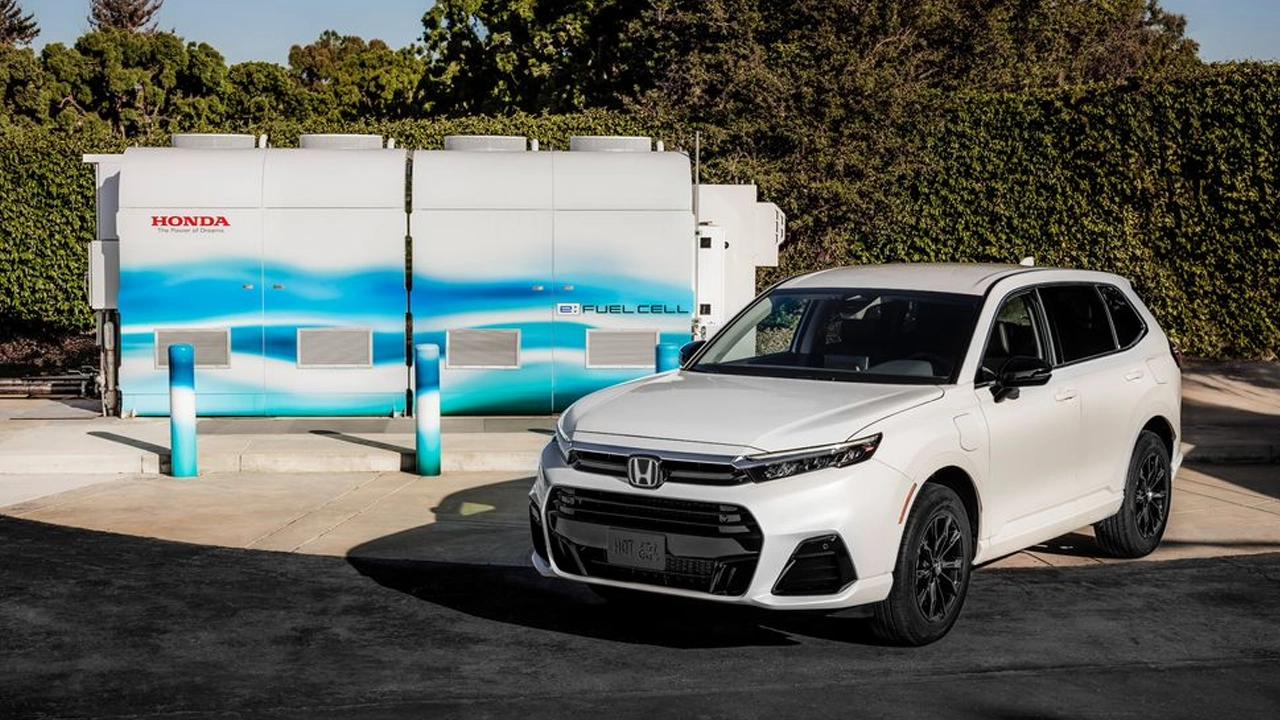In an innovative leap towards a more sustainable automotive future, Honda has introduced the 2025 CR-V e:FCEV—a hydrogen fuel-cell version of its beloved compact SUV. This groundbreaking model combines the practicality of a compact SUV with the environmental benefits of hydrogen fuel, making it a compelling option for eco-conscious drivers. Let’s dive deep into the details of this pioneering vehicle, its features, and what it means for the future of automotive technology.
The Birth of the Hydrogen-Powered CR-V
Honda’s CR-V has long been a favorite in the compact SUV segment, known for its reliability, spaciousness, and overall value. The 2024 model even earned a 10Best award, cementing its status as a top contender. Building on this legacy, Honda has ventured into new territory by integrating a hydrogen fuel-cell system into the CR-V, marking a significant milestone in the evolution of the model and the industry.
Powertrain and Performance: The Heart of the e:FCEV
At the core of the 2025 Honda CR-V e:FCEV is a second-generation fuel-cell module that replaces the traditional internal combustion engine. This module, developed in collaboration with General Motors, converts hydrogen gas into electricity, which then powers an electric motor. The motor delivers a peak output of 174 horsepower and 229 pound-feet of torque, providing ample power for everyday driving.
One of the standout features of the CR-V e:FCEV is its plug-in capability, supported by a 17.7-kWh battery pack. This allows the SUV to operate as a plug-in hybrid, offering an EPA-estimated 29 miles of electric-only range. When the hydrogen fuel-cell system is engaged, the vehicle boasts an impressive EPA-estimated driving range of 270 miles, making it a practical choice for longer journeys.
Leasing Options
Starting July 9, 2024, the 2025 Honda CR-V e:FCEV will be available for lease exclusively in California, reflecting the state’s robust hydrogen refueling infrastructure. Honda has announced flexible leasing options to suit different needs:
Two-Year Lease: $489 per month with $2989 due at signing, including $25,000 worth of hydrogen fuel credits.
Three-Year Lease: $459 per month with $2959 due at signing, including $15,000 worth of hydrogen fuel credits.
Six-Year Lease: $389 per month with $2889 due at signing, including $30,000 worth of hydrogen fuel credits.
These options are available through 12 approved dealerships in California, emphasizing the initial exclusivity of this cutting-edge vehicle.
Design and Dimensions
While the 2025 CR-V e:FCEV retains the familiar silhouette of its siblings, it features distinct design elements that set it apart. The front end has been reimagined with new headlights, a larger lower grille, and separate air intakes, all contributing to a unique and futuristic look. Aerodynamic enhancements and tweaks to the rear liftgate, including white elements in the taillights, further differentiate the hydrogen model.
Dimensionally, the CR-V e:FCEV is 2.8 inches longer than its hybrid and non-hybrid counterparts, a change necessitated by the integration of the hydrogen fuel-cell system. Honda has also increased the rear lateral and torsional rigidity by 10% and 9%, respectively, and revised the suspension to ensure a smooth and stable ride.
Interior
Inside, the CR-V e:FCEV offers a blend of luxury and advanced technology. The cabin features a new push-button shifter on the center console, digital gauge cluster, and a 9.0-inch touchscreen with wireless Apple CarPlay and Android Auto. Standard equipment includes a 12-speaker Bose stereo system, heated front seats, a heated steering wheel, wireless phone charging, and the comprehensive Honda Sensing suite of driver-assistance technologies.
- Nearly 30% of UK Drivers Believe Car Tax Should Be Based on Mileage — Survey
- Why Planes and Boats Escaped the Luxury Tax But Cars Didn’t
- Australia’s Headlight Confusion: Authorities Warn Drivers After Viral $250 Headlight Rule Goes Wild Online
- 2025 Hyundai Venue Facelift Launched in India – Full Details, Variants, and Price
- Royal Enfield Bullet 650 Unveiled at EICMA 2025: A Classic Legend Returns
While the addition of hydrogen tanks has impacted cargo space, Honda has yet to release specific figures for cargo volume or rear-seat passenger space. Nevertheless, the CR-V e:FCEV promises to deliver the same level of comfort and convenience that drivers have come to expect from the CR-V lineup.
A Step Towards Sustainable Mobility
The introduction of the 2025 Honda CR-V e:FCEV represents a significant step towards sustainable mobility. By combining hydrogen fuel-cell technology with the practicality of a compact SUV, Honda is paving the way for a greener future. Although currently limited to California, the CR-V e:FCEV has the potential to expand as hydrogen refueling infrastructure develops across the United States and beyond.
Conclusion
The 2025 Honda CR-V e:FCEV is more than just a new variant of a popular SUV; it is a bold statement about the future of automotive technology. With its hydrogen powertrain, plug-in capability, and array of advanced features, the CR-V e:FCEV offers a glimpse into a future where sustainability and performance go hand in hand. For drivers in California, it presents an exciting opportunity to be part of this groundbreaking journey, driving a vehicle that not only meets their needs but also contributes to a cleaner, greener world.
Source and Image Credit

